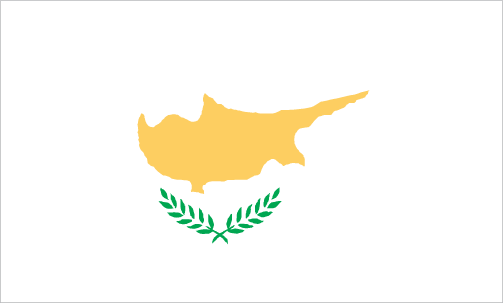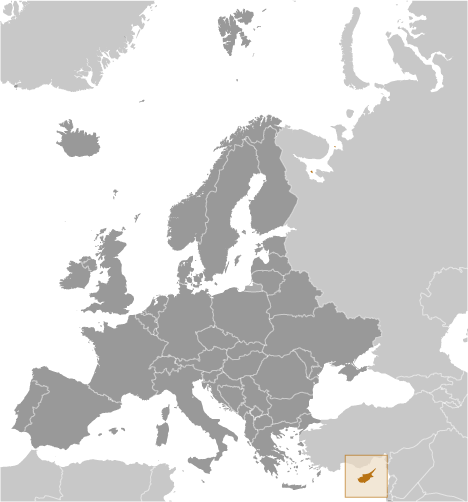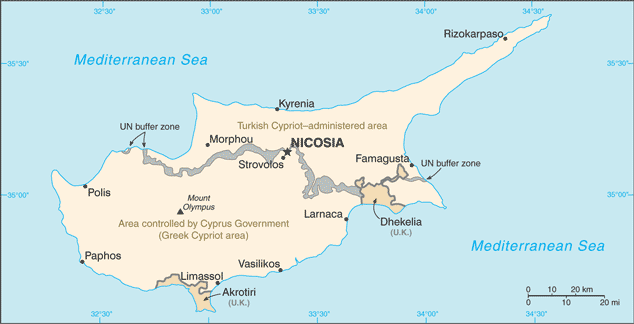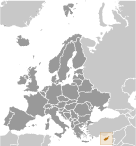
|
|
Advertisements:
EconomyEconomy - overview
The area of the Republic of Cyprus under government control has a market economy dominated by the service sector, which accounts for four-fifths of GDP. Tourism, financial services, and real estate are the most important sectors. Erratic growth rates over the past decade reflect the economy's reliance on tourism, the profitability of which often fluctuates with political instability in the region and economic conditions in Western Europe. Nevertheless, the economy in the area under government control has grown at a rate well above the EU average since 2000. Cyprus joined the European Exchange Rate Mechanism (ERM2) in May 2005 and adopted the euro as its national currency on 1 January 2008. An aggressive austerity program in the preceding years, aimed at paving the way for the euro, helped turn a soaring fiscal deficit (6.3% in 2003) into a surplus of 1.2% in 2008, and reduced inflation to 4.7%. This prosperity came under pressure in 2009, as construction and tourism slowed in the face of reduced foreign demand triggered by the ongoing global financial crisis. Although Cyprus lagged behind its EU peers in showing signs of stress from the global crisis, the economy tipped into recession in 2009, contracting by 1.7%, and has been slow to bounce back since, posting an anemic growth rate of 1.0% in 2010. A massive munitions blast in July 2011 at a Cypriot naval base triggered country-wide energy outages, a collapse of the governing coalition, and a cabinet shuffle intensifying Cyprus's economic problems. The economy experienced no economic growth in 2011. Serious Cypriot financial sector problems surfaced in early 2011 as the Greek fiscal crisis and euro zone debt crisis deepened. Two of Cyprus's biggest banks are among the largest holders of Greek bonds in Europe and have a substantial presence in Greece through bank branches and subsidiaries. A liquidity squeeze is choking the financial sector and the real economy as many global investors doubt the Cypriot economy can weather the EU crisis. Cyprus's borrowing costs have risen steadily because of its exposure to Greek debt. The budget deficit is on the rise and reached 7.4% of GDP in 2011, a violation of the EU's budget deficit criteria - no more than 3% of GDP. In response to the country's deteriorating finances and serious risk of contagion from the Greek debt crisis, Nicosia is promising to implement measures to cut the cost of the state payroll, curb tax evasion, and revamp social benefits. However, it has been slow to act, lacking a consensus in parliament and among the social partners for its proposed measures. Gdp (purchasing power parity) World Ranking: 122
$24.03 billion (2011 est.)
$23.91 billion (2010 est.) $23.64 billion (2009 est.) Note Data are in 2011 US dollars Gdp (official exchange rate)
$24.95 billion (2011 est.)
Gdp - real growth rate World Ranking: 187
0.5% (2011 est.)
1.1% (2010 est.) -1.9% (2009 est.) Gdp - per capita (ppp) World Ranking: 46
$29,400 (2011 est.)
$29,800 (2010 est.) $29,700 (2009 est.) Note Data are in 2011 US dollars Gdp - composition by sector
Agriculture 2.4%
Industry 16.5% Services 81.1% (2011 est.) Labor force World Ranking: 159
414,100 (2011 est.)
Labor force - by occupation
Agriculture 8.5%
Industry 20.5% Services 71% (2006 est.) Unemployment rate World Ranking: 90
7.7% (2011 est.)
6.2% (2010 est.) Population below poverty line
NA%
Household income or consumption by percentage share
Lowest 10% NA%
Highest 10% NA% Distribution of family income - gini index World Ranking: 117
29 (2005)
Investment (gross fixed) World Ranking: 129
16.7% of GDP (2011 est.)
Budget
Revenues $10.36 billion
Expenditures $11.98 billion (2011 est.) Taxes and other revenues World Ranking: 43
41.5% of GDP (2011 est.)
Budget surplus (+) or deficit (-) World Ranking: 178
-6.5% of GDP (2011 est.)
Public debt World Ranking: 36
65.8% of GDP (2011 est.)
61.5% of GDP (2010 est.) Note Data cover general government debt, and includes debt instruments issued (or owned) by government entities other than the treasury; the data include treasury debt held by foreign entities; the data exclude debt issued by subnational entities, as well as intra-governmental debt; intra-governmental debt consists of treasury borrowings from surpluses in the social funds, such as for retirement, medical care, and unemployment Inflation rate (consumer prices) World Ranking: 66
3.3% (2011 est.)
2.4% (2010 est.) Central bank discount rate World Ranking: 122
1.75% (31 December 2011)
1.75% (31 December 2010) Note This is the European Central Bank's rate on the marginal lending facility, which offers overnight credit to banks in the euro area Commercial bank prime lending rate World Ranking: 136
7.5% (31 December 2011 est.)
6.815% (31 December 2010 est.) Stock of narrow money World Ranking: 67
$14.73 billion (31 December 2011 est.) $4.622 billion (31 December 2010 est.) Note See entry for the European Union for money supply in the euro area; the European Central Bank (ECB) controls monetary policy for the 17 members of the EMU; individual members of the EMU do not control the quantity of money circulating within their own borders Stock of broad money World Ranking: 68
$56.25 billion (31 December 2011 est.) $52.97 billion (31 December 2010 est.) Stock of domestic credit World Ranking: 64
$54.88 billion (31 December 2011 est.) $53.92 billion (31 December 2010 est.) Market value of publicly traded shares World Ranking: 77
$2.853 billion (31 December 2011) $6.834 billion (31 December 2010) $4.993 billion (31 December 2009) Agriculture - products
Citrus, vegetables, barley, grapes, olives, vegetables; poultry, pork, lamb; dairy, cheese Industries
Tourism, food and beverage processing, cement and gypsum production, ship repair and refurbishment, textiles, light chemicals, metal products, wood, paper, stone and clay products Industrial production growth rate World Ranking: 142
0.7% (2011 est.)
Electricity - production World Ranking: 115
4.709 billion kWh (2008 est.)
Electricity - consumption World Ranking: 118
4.556 billion kWh (2008 est.)
Electricity - exports
0 kWh (2009 est.)
Electricity - imports
0 kWh (2010 est.)
Oil - production World Ranking: 165
0 bbl/day (2010 est.)
Oil - consumption World Ranking: 91
61,000 bbl/day (2010 est.)
Oil - exports World Ranking: 149
0 bbl/day (2009 est.)
Oil - imports World Ranking: 82
57,290 bbl/day (2009 est.)
Oil - proved reserves World Ranking: 121
0 bbl (1 January 2011 est.)
Natural gas - production World Ranking: 170
0 cu m (2009 est.)
Natural gas - consumption World Ranking: 168
0 cu m (2009 est.)
Natural gas - exports World Ranking: 86
0 cu m (2009 est.)
Natural gas - imports World Ranking: 180
0 cu m (2010 est.)
Natural gas - proved reserves World Ranking: 167
0 cu m (1 January 2011 est.)
Current account balance World Ranking: 153
-$2.635 billion (2011 est.)
-$2.803 billion (2010 est.) Exports World Ranking: 140
$2.165 billion (2011 est.)
$1.518 billion (2010 est.) Exports - commodities
Citrus, potatoes, pharmaceuticals, cement, clothing Exports - partners
Greece 26.2%, UK 10.2%, Germany 5.6% (2011) Imports World Ranking: 106
$8.034 billion (2011 est.)
$8.032 billion (2010 est.) Imports - commodities
Consumer goods, petroleum and lubricants, machinery, transport equipment Imports - partners
Greece 21.5%, Israel 10.4%, UK 9.2%, Italy 8.3%, Germany 8.1%, France 5.7%, China 4.8%, Netherlands 4.6% (2011) Reserves of foreign exchange and gold World Ranking: 127
$1.207 billion (31 December 2011 est.) $1.144 billionDebt - external World Ranking: 66
$NA $35.87 billion (31 December 2011 est.) $30.77 billion (31 December 2010 est.) Stock of direct foreign investment - at home World Ranking: 63
$28.2 billion (31 December 2011 est.) $26.1 billion (31 December 2010 est.) Stock of direct foreign investment - abroad World Ranking: 50
$13.41 billion (31 December 2011 est.) $12.41 billion (31 December 2010 est.) Exchange rates
Euros (EUR) per US dollar -
0.7194 (2011 est.) 0.755 (2010 est.) 0.7198 (2009 est.) 0.6827 (2008 est.) 0.7345 (2007 est.) Fiscal year
Calendar year
Economy of the area administered by turkish cypriots
Economy - overview
The Turkish Cypriot economy has roughly half the per capita GDP of the south, and economic growth tends to be volatile, given the north's relative isolation, bloated public sector, reliance on the Turkish lira, and small market size. The Turkish Cypriots are heavily dependent on transfers from the Turkish Government. Ankara directly finances about one-third of the Turkish Cypriot "administration's" budget. Aid from Turkey has exceeded $400 million annually in recent years. The Turkish Cypriot economy experienced a sharp slowdown in 2008-09 due to the global financial crisis and to its reliance on British and Turkish tourism, both of which declined due to the recession. The Turkish Cypriot budget deficit also deteriorated in 2009 due to decreased state revenues and increased government expenditures on public sector salaries and social services. The Turkish Cypriot economy declined about 0.6% in 2010. GDP (purchasing power parity) $1.829 billion (2007 est.)GDP - real growth rate -0.6% (2010 est.) GDP - per capita $11,700 (2007 est.) GDP - composition by sector Agriculture: 8.6%, industry: 22.5%, services: 69.1% (2006 est.) Labor force 95,030 (2007 est.)Labor force - by occupation Agriculture: 14.5%, industry: 29%, services: 56.5% (2004) Unemployment rate 9.4% (2005 est.)Population below poverty line %NA Inflation rate 11.4% (2006) Budget Revenues: $2.5 billion, expenditures: $2.5 billion (2006) Agriculture - products Citrus fruit, dairy, potatoes, grapes, olives, poultry, lamb Industries Foodstuffs, textiles, clothing, ship repair, clay, gypsum, copper, furniture Industrial production growth rate -0.3% (2007 est.)Electricity production 998.9 million kWh (2005) Electricity consumption 797.9 million kWh (2005) Exports $68.1 million, f.o.b. (2007 est.) Export - commodities Citrus, dairy, potatoes, textiles Export - partners Turkey 40%; direct trade between the area administered by Turkish Cypriots and the area under government control remains limited Imports $1.2 billion, f.o.b. (2007 est.) Import - commodities Vehicles, fuel, cigarettes, food, minerals, chemicals, machinery Import - partners Turkey 60%; direct trade between the area administered by Turkish Cypriots and the area under government control remains limited Reserves of foreign exchange and gold $NADebt - external $NA Currency (code) Turkish new lira (YTL) Exchange rates Turkish new lira per US dollar: 1.668 (2011) 1.5026 (2010) 1.55 (2009) 1.3179 (2008) 1.319 (2007)
Comments
Add a new comment: |
Advertisement
Members area
Cyprus (Nicosia):
 
GPS points from Cyprus (Nicosia)
|
||||||||

 A former British colony, Cyprus became independent in 1960 following years of resistance to British rule. Tensions between the Greek Cypriot majority and Turkish Cypriot minority came to a head in December 1963, when violence broke out in the capital of Nicosia. Despite the deployment of UN peacekeepers in 1964, sporadic intercommunal violence continued forcing most Turkish Cypriots into enclaves throughout the island. In 1974, a Greek Government-sponsored attempt to seize control of Cyprus was met by military intervention from Turkey, which soon controlled more than a third of the island. In 1983, the Turkish Cypriot-occupied area declared itself the "Turkish Republic of Northern Cyprus" ("TRNC"), but it is recognized only by Turkey. The election of a new Cypriot president in 2008 served as the impetus for the UN to encourage both the Greek Cypriot and Turkish Cypriot communities to reopen unification negotiations. In September 2008, the leaders of the two communities began negotiations under UN auspices aimed at reuniting the divided island. The talks are ongoing and the leaders continue to meet regularly. The entire island entered the EU on 1 May 2004, although the EU acquis - the body of common rights and obligations - applies only to the areas under the internationally recognized government, and is suspended in the areas administered by Turkish Cypriots. However, individual Turkish Cypriots able to document their eligibility for Republic of Cyprus citizenship legally enjoy the same rights accorded to other citizens of European Union states.
A former British colony, Cyprus became independent in 1960 following years of resistance to British rule. Tensions between the Greek Cypriot majority and Turkish Cypriot minority came to a head in December 1963, when violence broke out in the capital of Nicosia. Despite the deployment of UN peacekeepers in 1964, sporadic intercommunal violence continued forcing most Turkish Cypriots into enclaves throughout the island. In 1974, a Greek Government-sponsored attempt to seize control of Cyprus was met by military intervention from Turkey, which soon controlled more than a third of the island. In 1983, the Turkish Cypriot-occupied area declared itself the "Turkish Republic of Northern Cyprus" ("TRNC"), but it is recognized only by Turkey. The election of a new Cypriot president in 2008 served as the impetus for the UN to encourage both the Greek Cypriot and Turkish Cypriot communities to reopen unification negotiations. In September 2008, the leaders of the two communities began negotiations under UN auspices aimed at reuniting the divided island. The talks are ongoing and the leaders continue to meet regularly. The entire island entered the EU on 1 May 2004, although the EU acquis - the body of common rights and obligations - applies only to the areas under the internationally recognized government, and is suspended in the areas administered by Turkish Cypriots. However, individual Turkish Cypriots able to document their eligibility for Republic of Cyprus citizenship legally enjoy the same rights accorded to other citizens of European Union states.